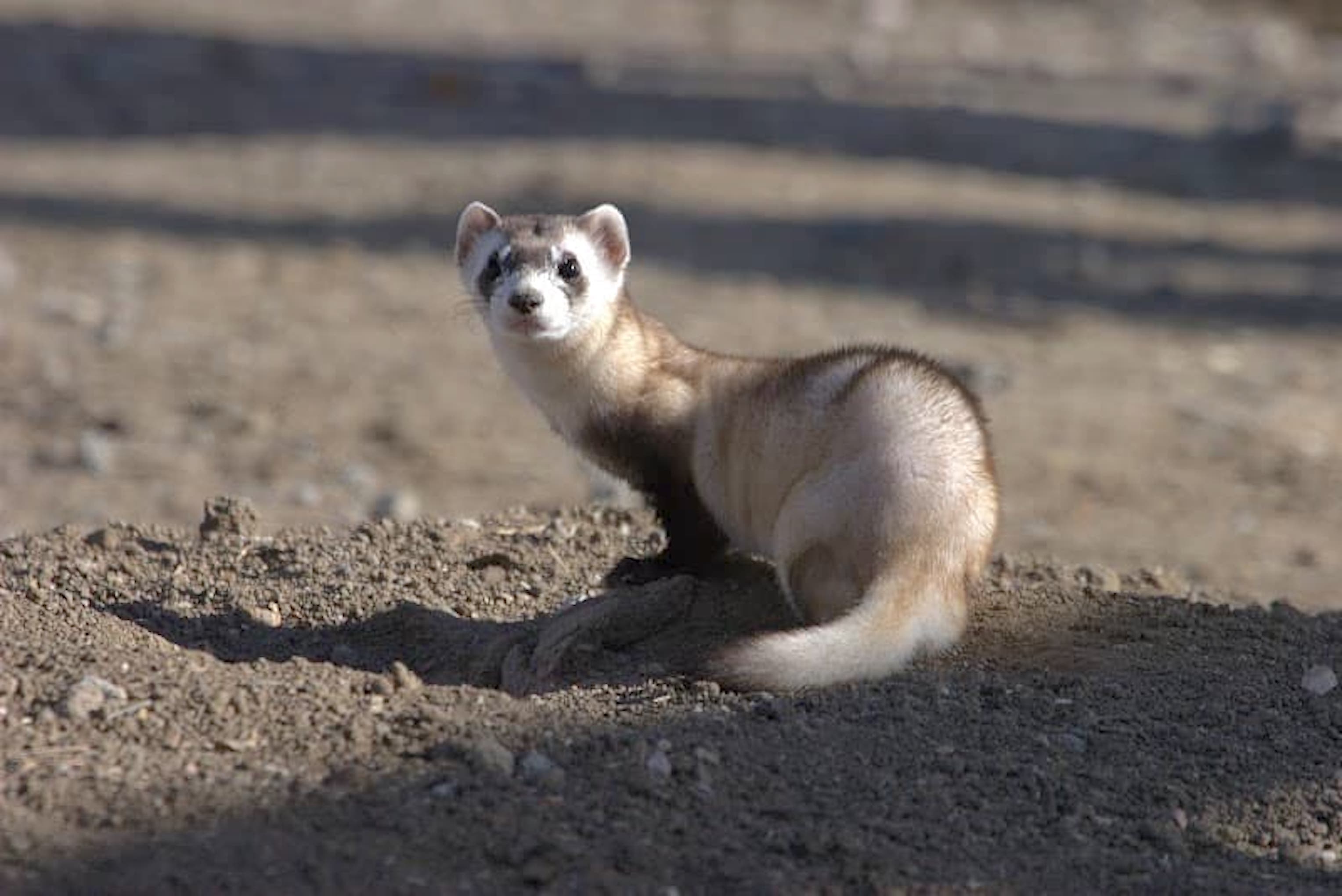Conservationists win black-footed ferret plan appeal for Thunder Basin National Grassland

FROM WYOFILE:
Appeals panel concludes plan shrinking the potential range of endangered mustelids violates laws by not considering reductions to grazing.
A plan that would shrink the potential range of endangered black-footed ferrets in Wyoming’s Thunder Basin National Grassland violates conservation laws because it failed to consider reductions to livestock grazing, among other things, a federal court ruled Monday.
The U.S. Court of Appeals for the 10th Circuit in Denver ordered Wyoming’s federal court, which had backed the grassland plan and ranchers, to reconsider its decision because of the shortcomings.
At issue is how to protect colonies of prairie dogs — a bane to ranchers — to enable potential recolonization by endangered black-footed ferrets that hunt and eat them.
Thunder Basin National Grassland officials approved a 2020 plan they said would sustain both prairie dogs and ferrets. Several conservation groups sued in 2021 but lost their case in Wyoming’s federal court in 2023.
Those groups appealed their loss and won a reprieve Monday.
There’s no indication Thunder Basin’s analysis “considered the combined effects of decreased [prairie dog habitat] acreage objectives, density control, plague, poisoning, and shooting on black-tailed prairie dog populations,” the three-judge appeals panel wrote. Because it found the plan unlawful, the panel concluded the federal Wyoming court should determine an “appropriate remedy.”
The grassland is administered by the U.S. Forest Service as part of the 2.9 million-acre Medicine Bow-Routt National Forest and Thunder Basin National Grassland complex. Conservationists celebrated the decision for the 553,000-acre federal grassland in northeastern Wyoming.
[T]he Court recognized what the Forest Service overlooked,” Megan Backsen, staff attorney with Western Watersheds Project, said in a statement. “[I]ncreasing the killing of prairie dogs, reducing protected habitat, and ceasing plague treatment directly threatens the survival of this keystone species on the Thunder Basin grassland.”
Jennifer Schwartz, an attorney with WildEarth Guardians that filed the suit along with Western Watersheds and Rocky Mountain Wild, said the court “recognized the immense value Thunder Basin holds for future ferret recovery.”
Wyoming’s case
The conflict over grazing and ferrets began in 2002 with a proposed grassland plan for 50,000 acres of prairie dog habitat. Unsatisfied, the Wyoming Department of Agriculture convened a stakeholders’ group that “identified a need to change direction for prairie dog management.”
Wyoming considers the black-tailed prairie dog an agricultural pest and species of concern. The stakeholders’ group influenced the grassland plan, according to state filings, and led to changes in 2020 that conservationists challenged in court in 2021. Wyoming intervened, arguing that the plan met legal standards.
The conservation groups filed their lawsuit in U.S. District Court in Washington, D.C., but Wyoming got it moved to the federal court in Wyoming, where it landed on the desk of Judge Scott Skavdahl. He sided with ranchers, the state of Wyoming and Thunder Basin administrators.
Conservationists “repeat their assertion that the prairie dog colony target of 10,000 acres, down to 7,500 acres during certain times of exception, such as drought, ‘could very well lead to the extirpation of prairie dogs from the Thunder Basin,’” Skavdahl wrote in 2023. “This hyperbole is only a repackaging of [conservationists’] primary disagreement with the 2020 plan. … [T]he court has already found the Forest Service reasonably considered the information the law requires… .”
But the appeals panel disagreed, finding among other things that Thunder Basin administrators failed to consider a “reasonable range” of alternatives.
“[N]one of the action alternatives focused on strategies that would expand [black-tailed prairie dog] acreage objectives or limit livestock grazing allotments,” the appeals panel wrote. The federal agency didn’t explain its reasoning or why it found that grazing reductions were outside the scope of its review.
Thunder Basin administrators contradicted themselves, the appeals judges wrote.
“It is entirely unclear from the [agency environmental reviews] whether the combined effects of reduced [prairie dog] acreage objectives, density control, poison, plague, and shooting were analyzed or even considered,” the judges wrote. “This absence is stark given [Thunder Basin’s] prior conclusions that the combined threats of habitat loss, poison, plague, and shooting could lead to the ‘eradication’ of prairie dog populations on Thunder Basin.”
WyoFile is an independent nonprofit news organization focused on Wyoming people, places and policy.
This story was posted on October 30, 2024.








